Decentralization is a power reconstruction happening around you and me.
Written by: Daii
In recent days, the biggest news in the crypto circle is undoubtedly the passage of the U.S. "GENIUS Stablecoin Act."
I have previously said that the U.S. dollar is like China's college entrance examination — not the best system, but the least bad one. In the context of the increasingly fragmented global monetary trust system, the implementation of the GENIUS Act can only be described in four words: mixed feelings.
The good news is that from now on, the on-chain traffic entry for dollar assets will be completely opened. Bitcoin has reached $107,000, and Ethereum has touched $2,600; the market's emotional surge seems to say it all. More importantly, this is just the beginning.
The concern is that the principle of decentralization will once again face "institutional pressure." The GENIUS Act clearly confines the issuance of stablecoins into the "license cage," and both algorithmic stablecoins and over-collateralized stablecoins will have to confront regulatory impacts head-on.
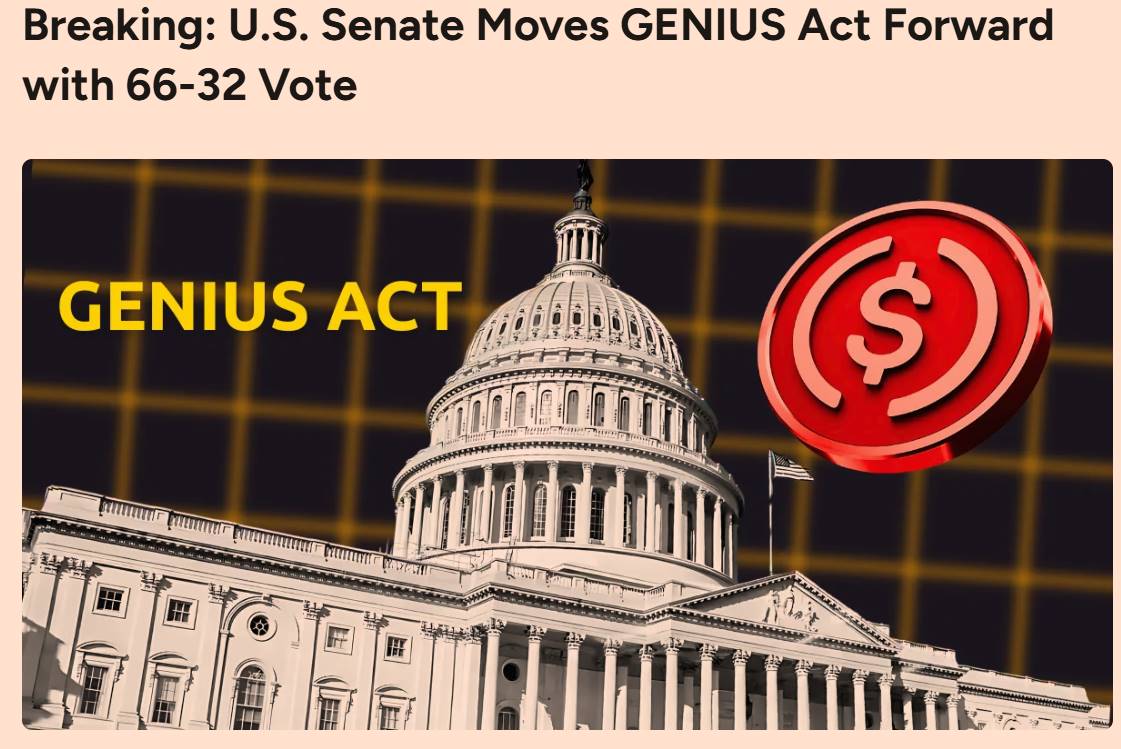
However, we must admire the clever tactics of the U.S.: the dollar is indeed heading towards decline, but it has found a way to prolong its life. After the petrodollar, the crypto dollar has become the "last lifeline" for dollar hegemony.
In the global wave of de-dollarization, the dollar has regained its stage through on-chain stablecoins. Liquidity is once again occupied by the dollar, but this time, it is presented in the form of on-chain addresses.
Of course, it’s fortunate that it’s the dollar, not the ruble.
But here comes the question: centralized dollar stablecoins entering the crypto world, which originally promised "decentralization," is it a blessing or a curse?
It may bring compliant traffic, or it may replace those truly decentralized experiments; it may promote global trading freedom, or it may once again return the control of value to "licensed individuals."
This is precisely the issue we must discuss today.
Today is the third and final piece of the "Decentralization Trilogy." Before we begin, let’s briefly review the main lines of the first two pieces:
In the first piece, we talked about the shattering of illusions.

In the early hours of April 15, 2025, a sudden interruption of an AWS cable in Tokyo caused global crypto trading volume to plummet by 15% within an hour, leading to a collective paralysis of mainstream exchanges; eight days later, small and medium-sized crypto platforms in Europe were hit by new Google ad regulations, resulting in a 67% drop in traffic exposure within just three days.
These two real shocks have completely torn off the mask of "false decentralization." On-chain decentralization still relies on Web2 in the background. No matter how distributed the code is, traffic is still in the hands of the giants.
In the second piece, we attempted to redefine "true decentralization."

True decentralization does not mean that everything must become on-chain code, but it must achieve three important characteristics:
Data is distributed, immutable, and recorded;
Incentive mechanisms are embedded, and the network is self-maintained by market forces;
Governance rules are automatically executed, transparent, and do not rely on arbitrary decisions.
We even measured three mainstream chains using the HHI index — unexpectedly finding that Ethereum's level of decentralization far exceeds that of Bitcoin and Solana.
And today, we will lower our perspective a bit, making it closer to everyday life.
We will only ask one question —
What does this abstract "decentralization" have to do with you?
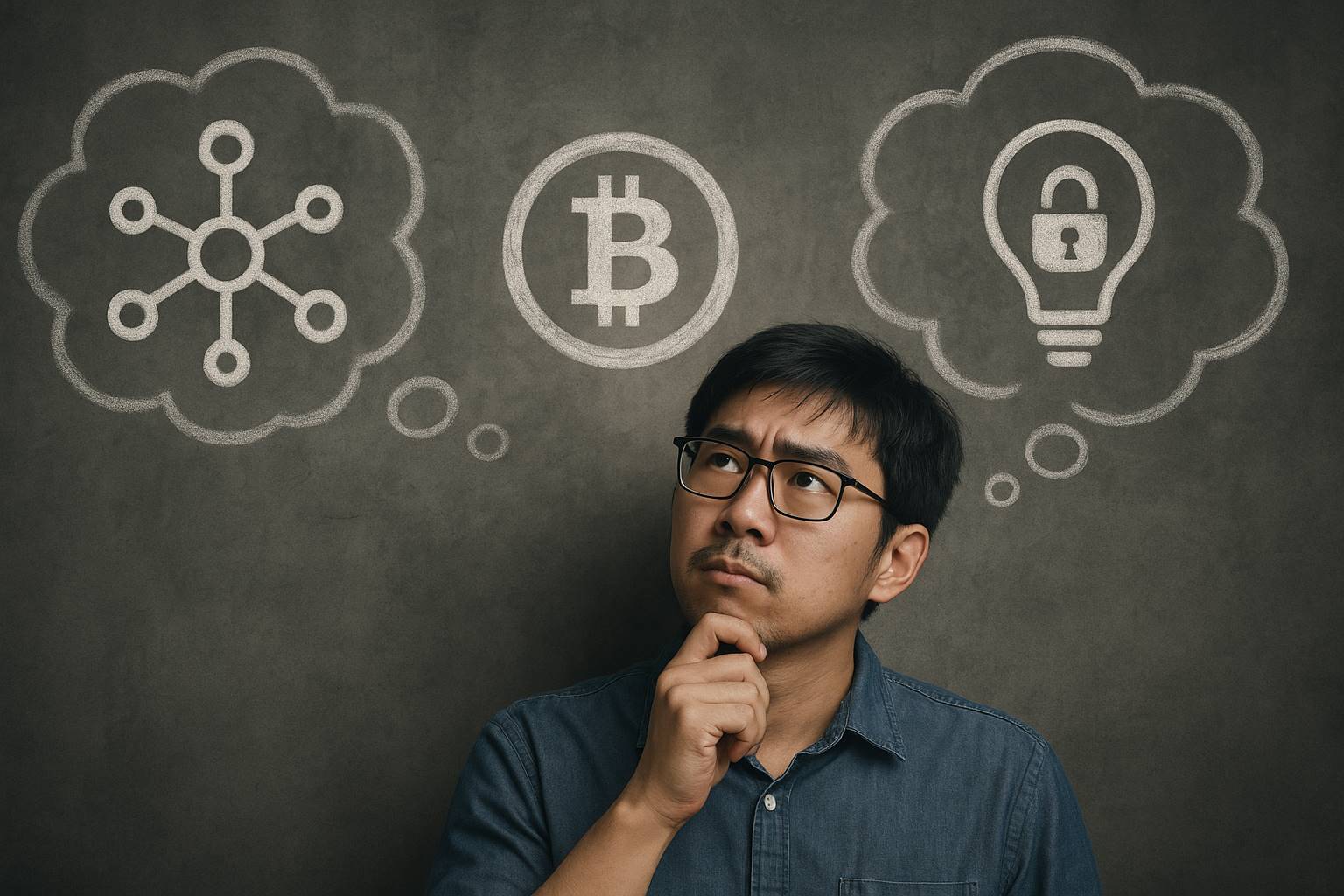
The answer is: it matters a lot.
It concerns your wallet, your sources of income, and even your future entrepreneurial opportunities. It is not some idealistic slogan, but an economic reality that is already happening and continuously evolving.
This article will outline three core paths to illustrate how decentralization transforms from an idea into a new economic order:
Tokenization of everything: allowing value to flow freely like information;
Airdrop economy: evolving from user payments to platforms sharing profits in reverse;
Open-source innovation flywheel: using modular pieces to build global applications.
These three are not isolated but form a closed-loop system, a new paradigm of exponential innovation in the economy.
Next, we will elaborate on each one.
1. Tokenization of Everything: Upgrading the Internet from an Information Network to a Value Network
Looking back to when email was first introduced, people were delighted to find that text, images, and audio could be instantly transmitted to the other side of the Earth. However, for decades, we have not been able to solve another problem: can "value" such as real estate, currency, gold, and future earnings flow as freely and efficiently as information?
Now, this question finally has a clear answer — Tokenization.
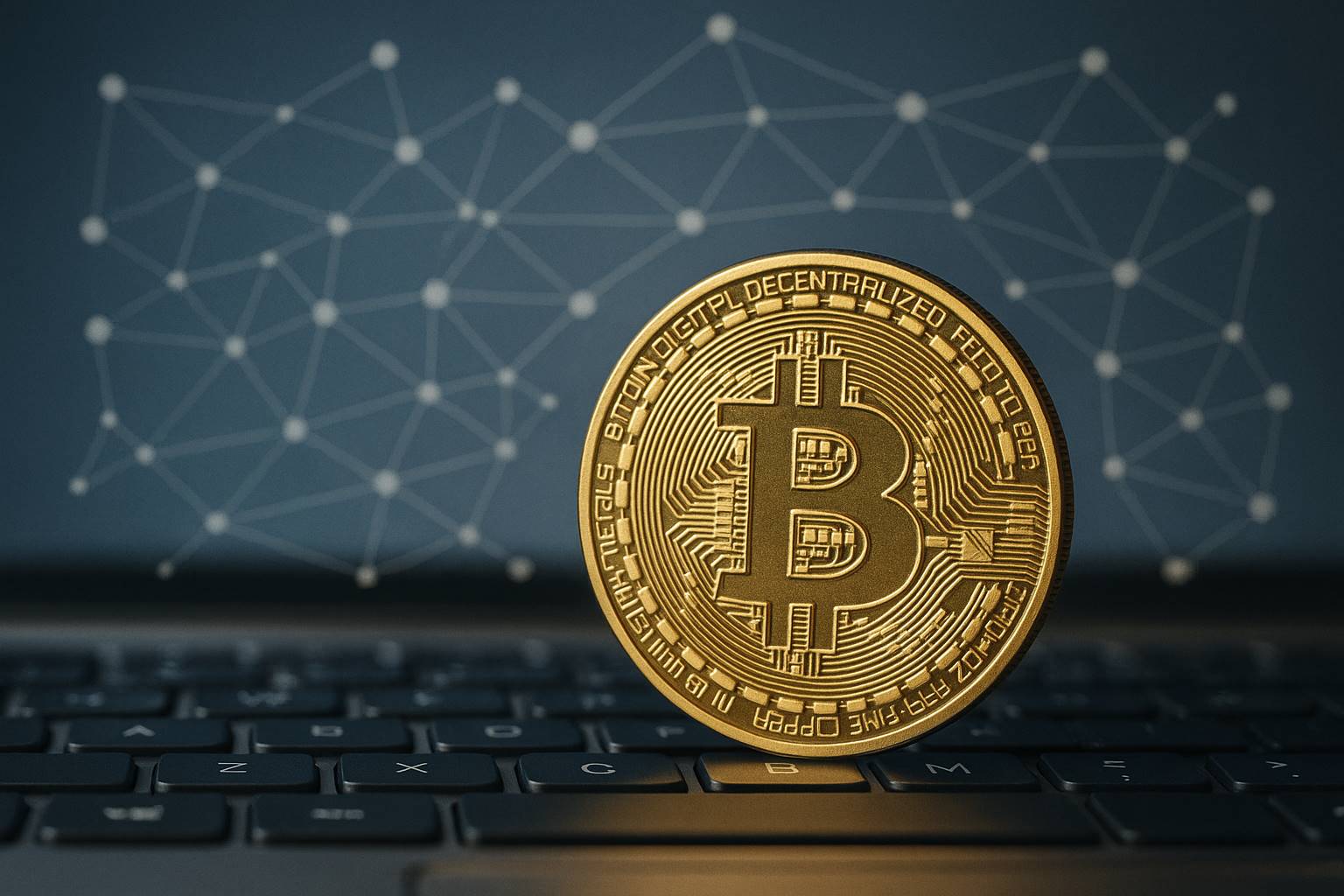
1.1 What is Tokenization?
In simple terms, tokenization is the process of converting valuable assets in the real world (such as houses, cars, gold, and dollars) into digital certificates (Tokens) on the blockchain. These certificates can be transmitted globally in real-time, just like emails.
For example: if you have $1 million, in the past, cross-border remittances required lengthy banking processes, taking days or even weeks. Now, through the stablecoin USDC issued by Circle, you can tokenize this amount into 1 million USDC and send it to any blockchain address around the world with almost zero delay.
If the recipient needs to convert it into fiat currency, they only need to go through compliant financial channels. This allows for seamless integration of on-chain and off-chain assets, enabling value to flow freely like text.
1.2 How is Tokenization Achieved?
The entire process can be summarized in three steps:
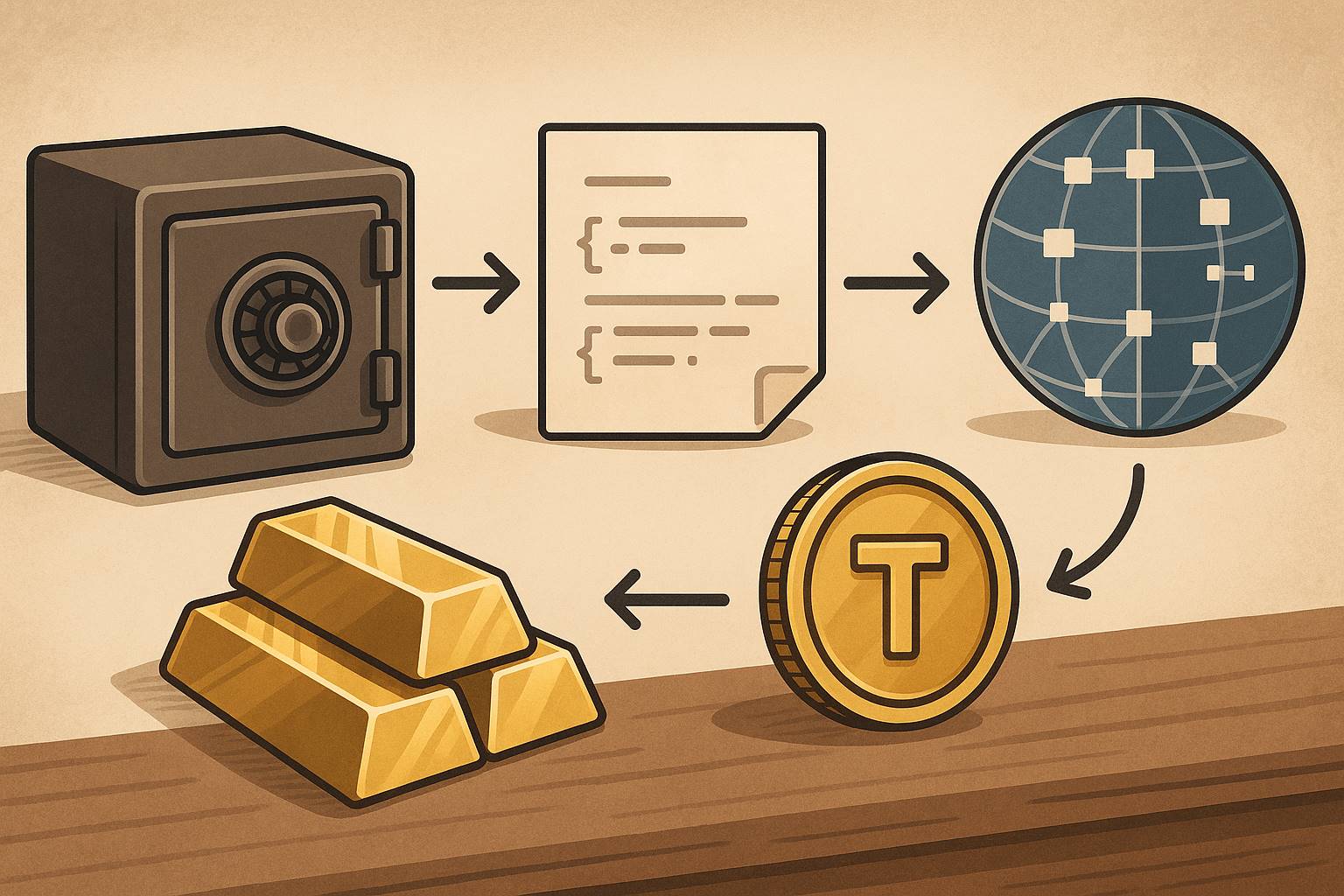
The first step is asset custody and rights confirmation. Taking gold as an example, physical gold must be entrusted to a compliant custodian; if it is a blockchain-native asset (like ETH), it is locked in a smart contract.
The second step is issuing token certificates. Once custody is completed, the system generates tokens according to preset rules (such as 1:1 pegging). For example, Paxos' PAXG is a gold token issued based on physical gold.
The third step is on-chain circulation and redemption. Once the token is issued, it can be used for transfers, transactions, and DeFi applications globally, and holders can redeem the corresponding assets according to the agreement.
This process significantly simplifies the traditional asset transfer logic, making it as efficient as email.
1.3 Why is Tokenization the Core of the Web3 Era?
To understand the importance of tokenization, we need to quickly review the three stages of internet development:
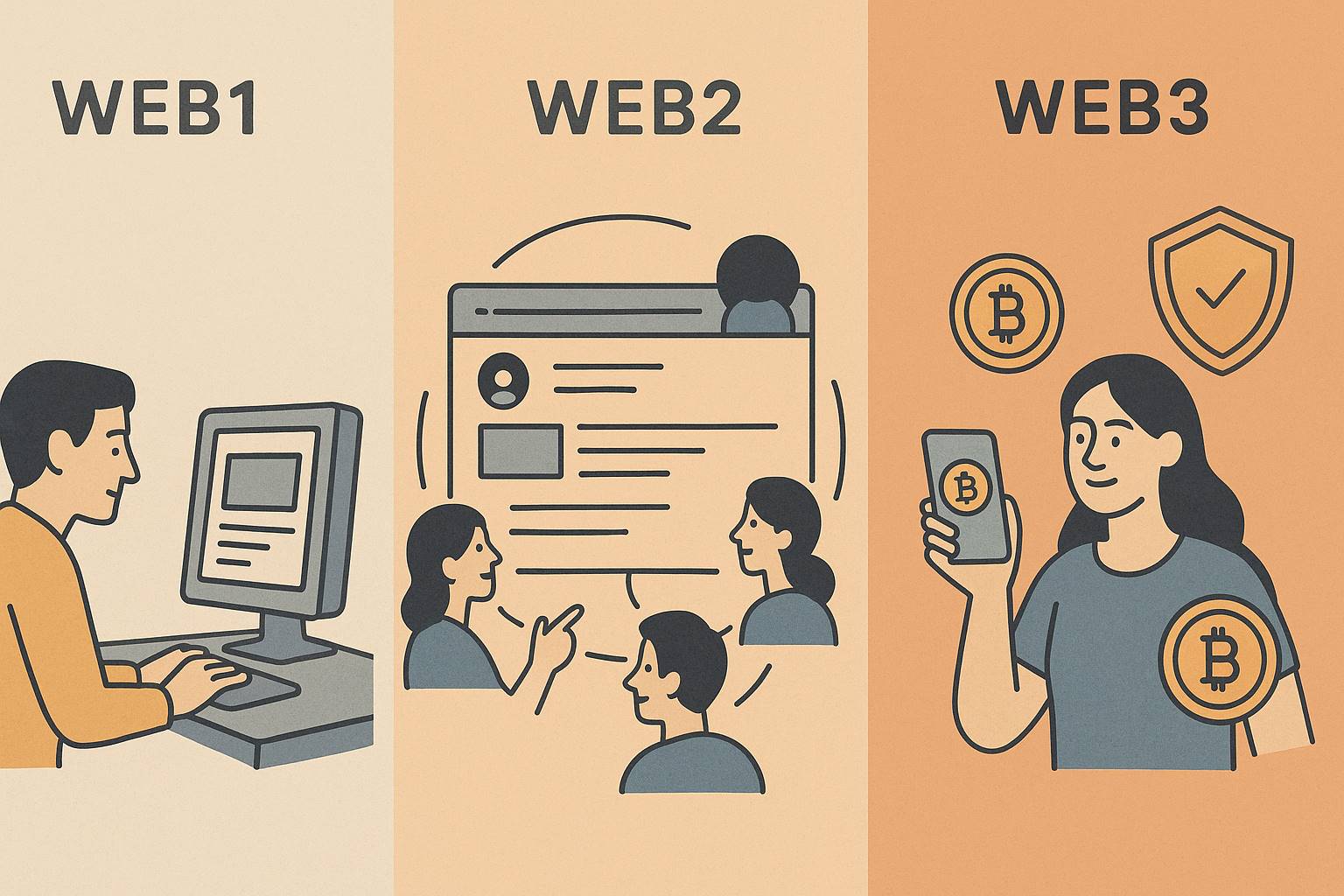
Web1 (Read-Only Era): In the 1990s, the internet was a collection of static content, and users were readers of information;
Web2 (Read-Write Era): After 2000, social platforms emerged, and users began to create and interact, but platforms firmly controlled data and profits;
Web3 (Ownership Era): Decentralized networks grant users true ownership of digital assets and data, and tokenization is the key tool for realizing this "user ownership."
In the Web3 era, the significance of tokenization is reflected in three aspects:
1.3.1 Value Can Flow Freely Around the Clock
Taking USDC as an example, Circle's data shows that as of May 15, 2025, its circulating market value has stabilized around $60.49 billion, with on-chain transaction volumes exceeding trillions of dollars. Funds can truly achieve "instant arrival" without being restricted by bank operating hours, holidays, or geographical locations, reaching unprecedented new heights in liquidity efficiency.
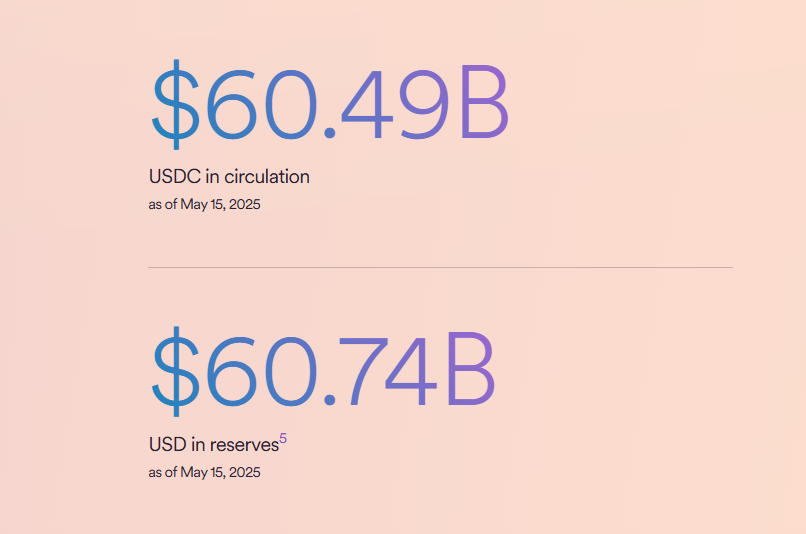
1.3.2 Assets Can Be Divided Infinitely, Significantly Lowering Investment Barriers
The rise of tokenization of real-world assets (RWA) allows ordinary people to access financial products that were previously exclusive to high-net-worth individuals. For instance, Ondo Finance (see below) and BlackRock's BUIDL fund are bringing U.S. Treasury bonds, money market funds, and other stable income assets on-chain, with participation possible for as little as a few dollars.

The Boston Consulting Group (BCG) predicts in its 2023 report that by 2030, the global market for tokenized non-liquid assets is expected to reach $16 trillion (see below).
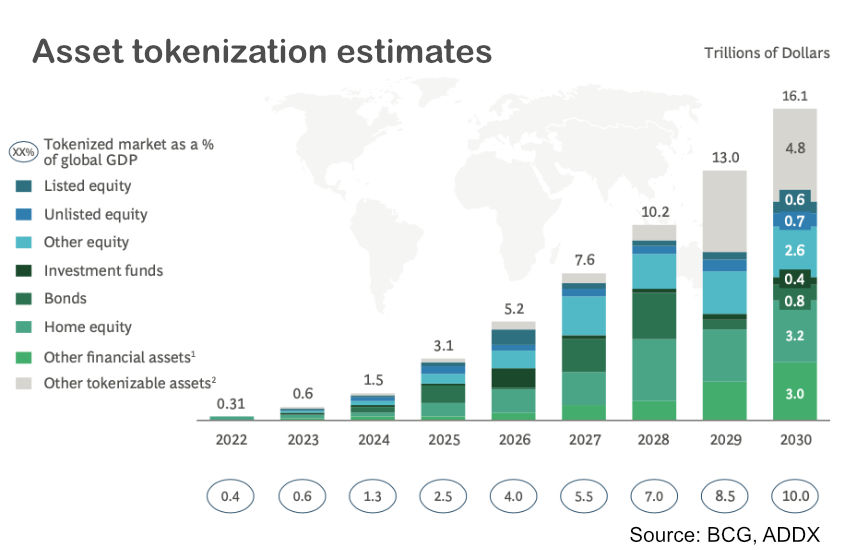
By early 2025, the on-chain tokenization scale of U.S. Treasury bonds alone had exceeded $7 billion (see below) and continues to grow.
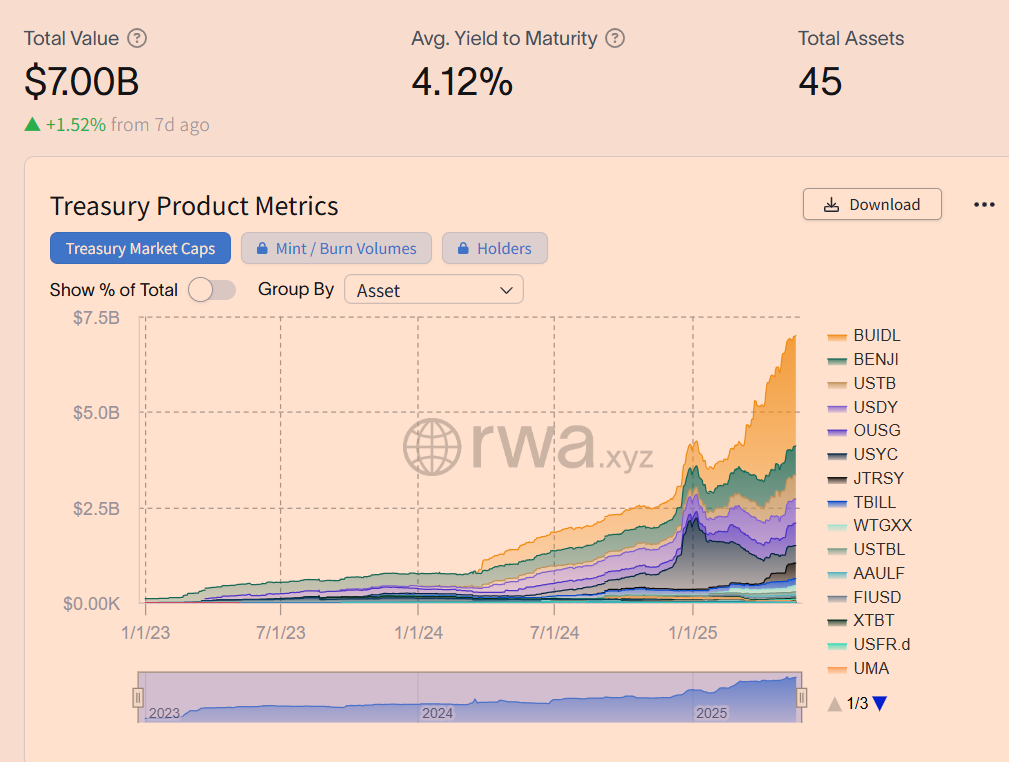
1.3.3 Assets Can Be Composed and Programmed, Unlocking Innovation Space
Tokenization not only brings liquidity but also possesses high composability and programmability, like "LEGO blocks." For example, with Ethereum's restaking protocol Ether.fi, users can stake ETH to receive eETH, which can then be used as collateral for lending, investing, and other operations.
Similarly, Pendle Finance separates, prices, and trades future earnings, constructing complex financial instruments such as on-chain fixed income and interest rate swaps. As of May 2025, data from DeFiLlama shows that yield token protocols like Pendle manage over $4 billion in assets (see below), demonstrating the powerful financial innovation momentum brought by tokenization.
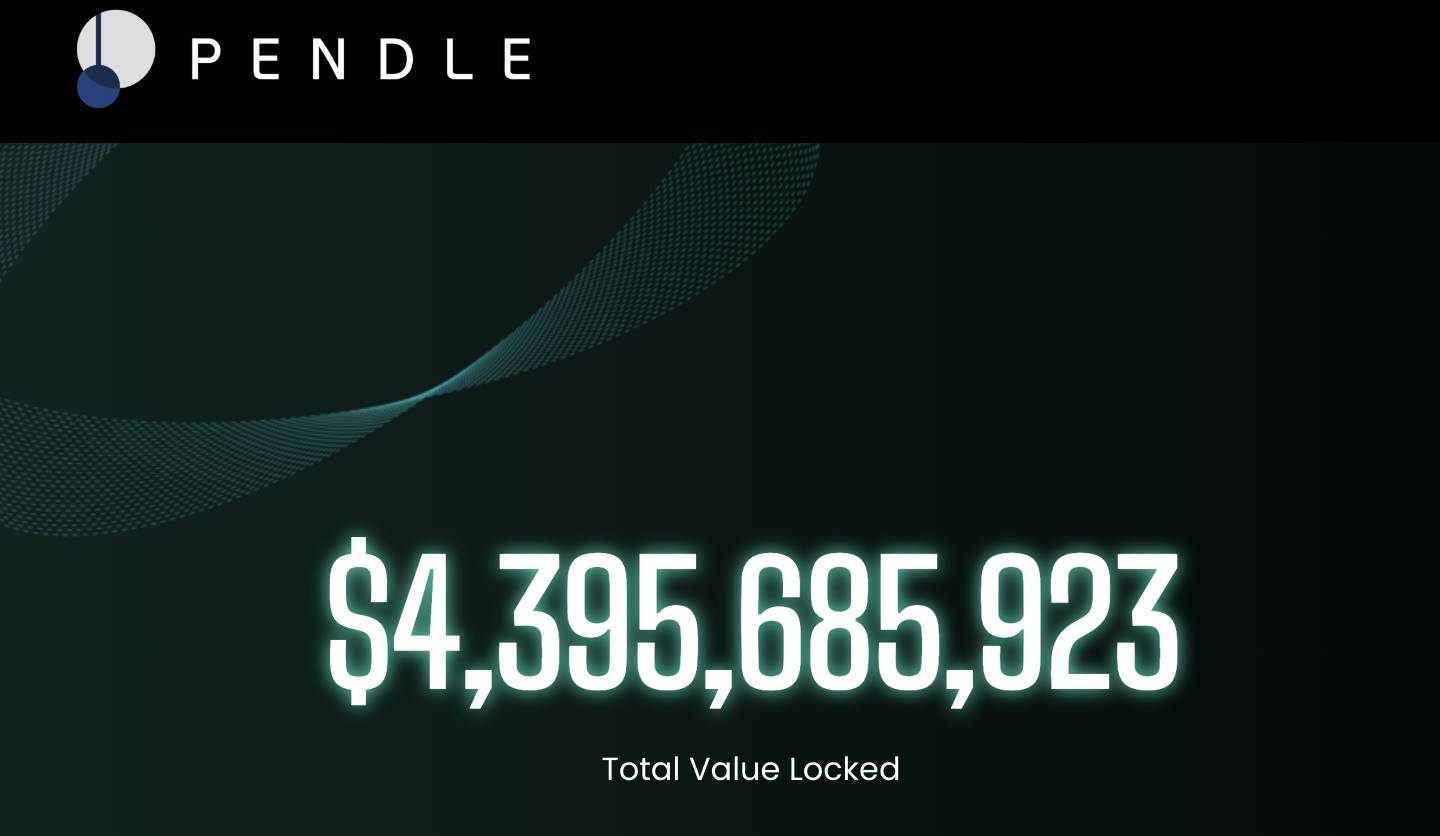
1.4 Challenges That Tokenization Still Needs to Overcome
Despite the broad prospects, tokenization still faces two core challenges:
Asset Custody Security and Compliance Transparency
How can we ensure that off-chain assets are real, secure, and auditable? Current mainstream practices include regular third-party audits, on-chain reserve reports, and compliant custody account systems, while regulatory frameworks are gradually being established globally.
Risks of Oracles and Pricing Mechanisms
If price oracles make errors, it could lead to large-scale liquidation events on DeFi platforms. The current industry response includes using decentralized oracles (like Chainlink) and adopting time-weighted average price mechanisms (TWAP), but the overall mechanism is still immature and requires continuous optimization.
From the analysis above, it is not difficult to see that tokenization has driven the internet from being merely an information carrier to an "internet of value" that can exchange real value. It has lowered the barriers for ordinary people to participate in high-value global investments and fundamentally changed the logic and speed of financial services.
When value can flow freely, the way platforms attract users will also change — from the traditional model of charging users to directly sharing value with them. The airdrop economy is the best example of this transformation.
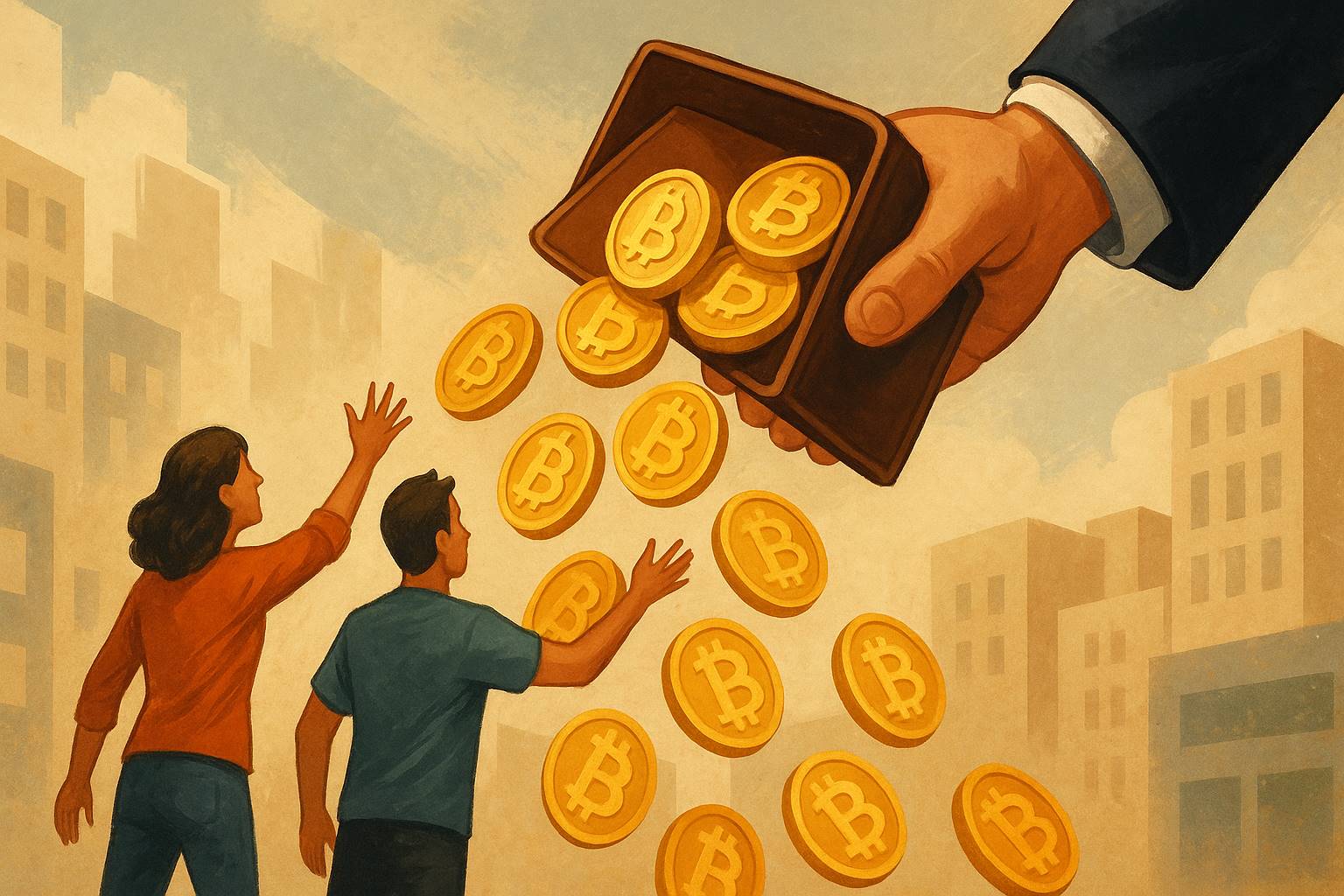
2. Airdrop Economy: The Value Leap from "User" to "Shareholder"
If tokenization allows value to flow freely like information, then the rise of the airdrop economy has completely rewritten the economic relationship between platforms and users.
We are experiencing an unprecedented revolution in business models —
From "User Pays" → to "Free Use" → and then to "Platforms Give Money."
In this process, users have been included in the core of profit distribution for the first time, truly upgrading from "consumers" to "co-builders" and "beneficiaries."
2.1 The Essence of the Airdrop Economy: Benefit Distribution + User Shareholder System
In the past, users paid for services; later, users used services for free, and platforms made money from advertisements. Now, decentralized platforms have taken it a step further: they directly give money to users.

This may sound like a fantasy, but the reality is even more surprising. The airdrop economy is about distributing tokens to early users, contributors, developers, and promoters, realizing the profits that were originally exclusive to the platform and distributing them to users. These tokens represent future income dividends and grant users governance rights, constructing a new platform model similar to a "user shareholder system."
To understand the power of the airdrop economy, we can use the "flywheel model" to see how it operates:
Token airdrops initiate growth: The platform distributes a certain proportion of tokens for free to early users or contributors.
User earnings create a sense of belonging: After receiving tokens, users not only enjoy the dividends from the rising token price but also gain the identity of "I am part of the platform."
Feeding back to the platform's activity and liquidity: As users engage more on the platform, the total value locked (TVL), trading volume, and reputation all rise.
Platform value increases, token price rises: Increased user participation drives the overall valuation of the platform and the price of tokens higher.
Attracting new users to continue pouring in: The positive cycle is triggered again, and token incentives become the engine of growth.
This logic is not theoretical; it has already played out multiple times in reality.
2.2 Airdrop Economy: Becoming a New Paradigm for Value Discovery and Community Building in Web3
In traditional business logic, any form of capital investment, whether for new user incentives or promotional cashback, must go through precise calculations of return on investment (ROI) and customer acquisition cost (CAC). However, the rise of the "airdrop economy" in the Web3 space is challenging this inherent thinking in a disruptive manner. It no longer follows the traditional path of "post-contribution rewards," but advocates for "value first, trust-driven" — that is, allocating rights to potential users and contributors first, leveraging this to stimulate their future enthusiasm for participation and ecosystem building.
2.2.1 Uniswap: The "Ownership Revolution" Ignited by Airdrops
The airdrop event of Uniswap in 2020 is a milestone practice of this new paradigm. It was not just a simple token distribution but was hailed as the "全民持股运动" (全民持股运动 translates to "全民持股运动" in English, which means "Universal Shareholding Movement" in the crypto world). Every early user was pleasantly surprised to find 400 UNI tokens added to their wallets, which at the time was worth about $1,200 and later surged past $10,000 during the subsequent bull market.
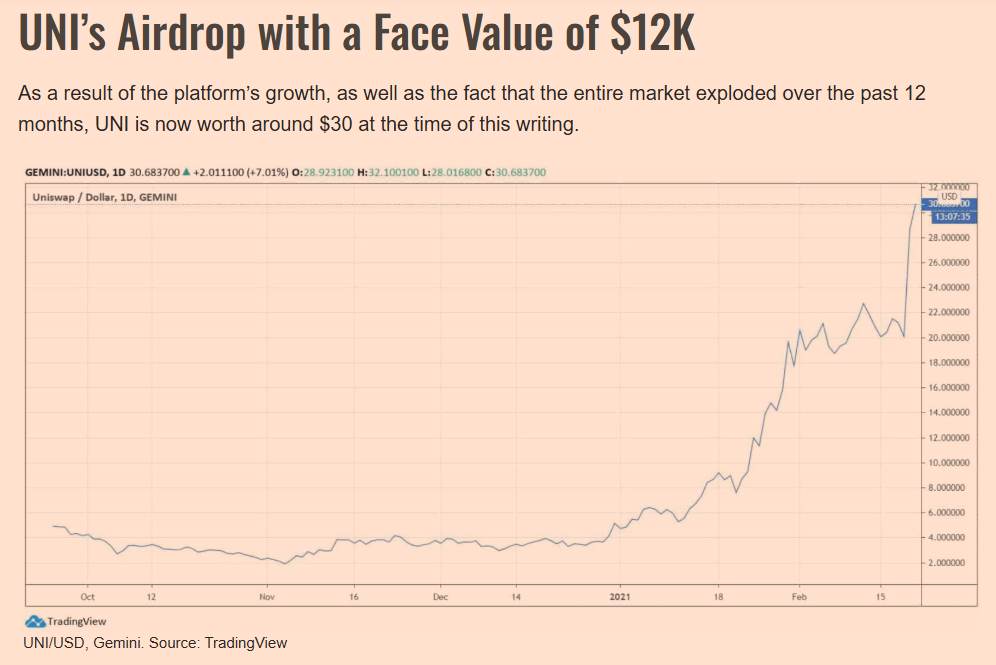
Uniswap's innovation lies in:
It was the first large-scale validation of "airdrops as advertising": It has been proven that directly distributing tokens to users is more effective than traditional advertising in attracting liquidity (TVL experienced explosive growth) and enhancing brand influence.
It reshaped the governance structure: Users are no longer just liquidity providers or mere service users; by holding governance tokens like UNI, they become "shareholders" and direct participants in the formulation of platform rules and future development. This marks a new attempt for open-source projects to transform community members into a core interest community.
2.2.2 EigenLayer: Systematic Market Launch Driven by Expectations
The success of Uniswap opened the door to the airdrop economy, and subsequent practitioners have pushed it to a more refined and strategic level. The restaking protocol EigenLayer is a typical representative. It did not directly issue tokens in the early stages but successfully attracted a large number of users to restake their ETH originally locked on the Ethereum mainnet through a cleverly constructed "airdrop expectation" mechanism.
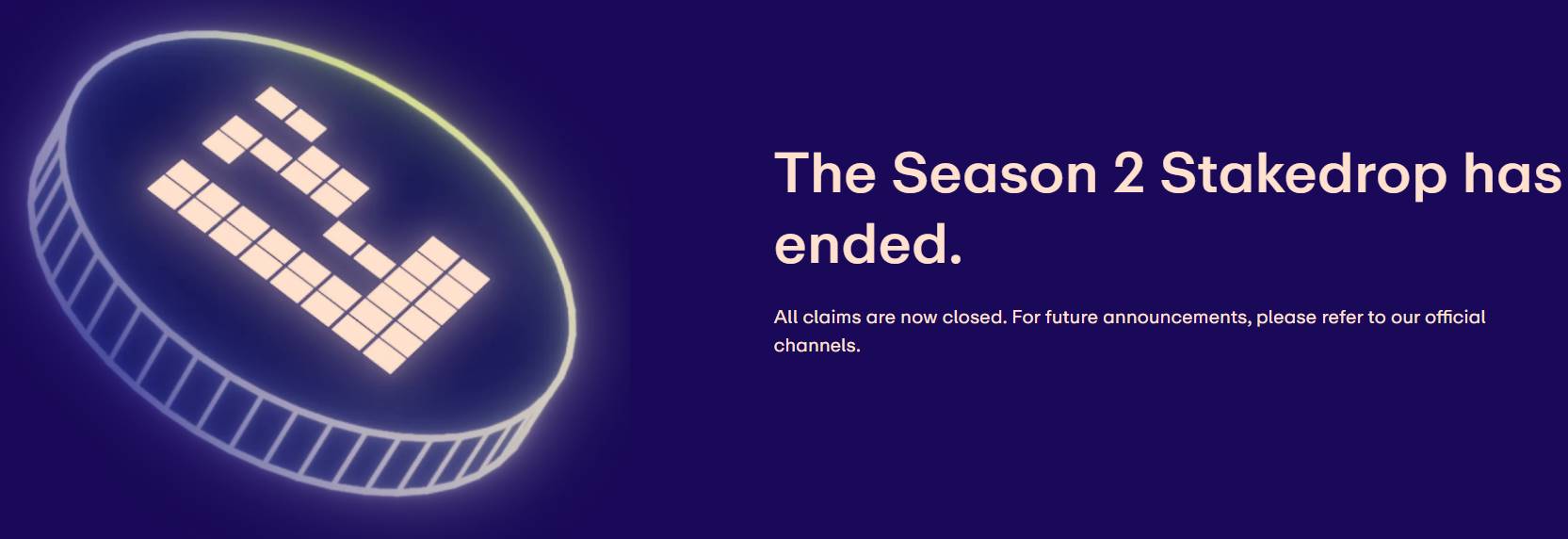
EigenLayer's strategy demonstrates the evolution of the airdrop economy:
The powerful attraction of expected value: Before the official airdrop of the EIGEN token, its total locked value (TVL) had already surpassed $10 billion based solely on clear expectations and mechanism design.
Systematic market launch experiments: The first round of token distribution in April 2024 not only caused a sensation in the crypto community but also directly ignited related sectors such as "modular security" and "active validation services" (AVS). This has gone far beyond simple rewards, resembling a grand market experiment that anchors current participation and ecosystem building with future rights.
These large-scale, inclusive airdrops are not a game for a small circle of elites but aim for a broad "consensus cold start." They cover a diverse range of ecological roles, from ordinary users to developers and node operators, injecting unprecedented vitality and participation into the entire network.
2.2.3 The Airdrop Economy Has Become the Core Engine of Web3 Narratives
From Uniswap's pioneering attempts to EigenLayer's innovative expectation management, we can clearly see a trend: airdrops are evolving from sporadic market behaviors into a core, systematic new paradigm in the Web3 space.
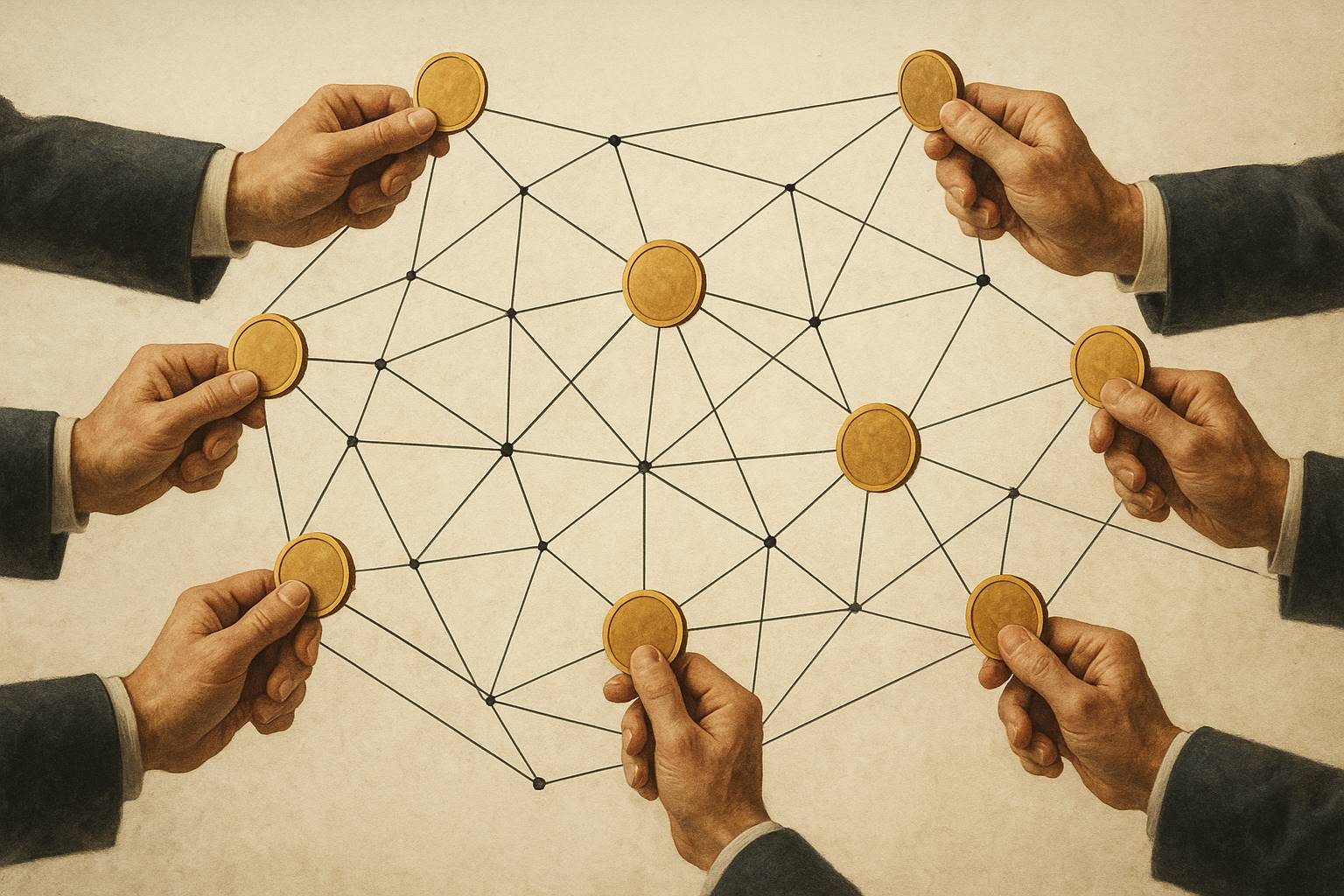
It is profoundly rewriting three core business propositions:
Where do users come from? — Transitioning from "purchased users" reliant on advertising to "co-building partners" attracted by value.
How is the community established? — Transitioning from loose interest aggregation to "distributed companies" based on common interests and ownership.
Why does the platform grow? — Transitioning from one-way service output to a positive flywheel driven by token economics and multi-party participation.
The essence of the airdrop economy goes far beyond the superficial "issuing tokens." It is a new organizational and incentive philosophy that views the community as a core asset, users as the starting engine, and tokens as the economic medium that connects everything. This perfectly embodies the classic vision of Web3: "No longer attracting users through advertising, but attracting value itself with value."
2.3 The Far-reaching Impact of the Airdrop Economy
The emergence of the airdrop economy has restructured the fundamental relationship logic between platforms and users, opening a new door to win-win scenarios for creators and developers.
2.3.1 Changes in Customer Acquisition Logic
In traditional internet models, platforms acquire customers in almost identical ways: burning money on advertisements, treating users as "target objects," and attention as "commodity resources," while competing for bids between Google and Facebook. The value of users has been defined from the outset as "targets to be converted."
But in the Web3 world, this model has been completely overturned.
Airdrops are no longer about platforms paying intermediaries to acquire users; instead, they directly convert the money that should have gone to advertising giants into tokens and distribute them to users who genuinely use the product, are willing to share, and participate in building. This is a trust-based reverse incentive mechanism; the platform is no longer "finding people to advertise," but "inviting users to become shareholders."

2.3.2 Users Become Shareholders
This change brings not only a reversal of customer acquisition logic but also a fundamental transformation of user identity. In the past, you were merely a "tenant" of the platform, using it and leaving, easily replaceable.
Now, you begin to participate as a "co-governing shareholder." You are not just a user but also a contributor, promoter, and even a rule-maker and decision-maker. Holding platform tokens is like holding shares in a company, stimulating deeper participation motivation and a sense of belonging.
2.3.3 Bottom-level Labor Becomes Co-builders
A more profound transformation is occurring among creators and developers.
In the Web2 era, platforms controlled distribution channels and traffic entry, and creators depended on them for survival but were often exploited; they helped platforms grow while watching them go public and profit.
In Web3, an increasing number of protocols reserve a portion of tokens as incentives for the "bottom-level laborers" of the ecosystem: content creators, independent developers, and node operators. They are not outsourced employees but true "co-builders" — exchanging contributions for shares and receiving dividends according to agreements. Platforms are no longer walls to look up to but bridges that can be built together and shared in the results.
This structural transformation not only improves the business model but also reshapes the fundamental logic of value distribution. Its deeper meaning lies in: the platform is no longer the center; the community is; users are no longer targets but partners; and all real growth now has its rightful owners.
2.4 Concerns of the Airdrop Economy: Beware of Bubbles and Abuse
Of course, this model also has its concerns:
Sybil attacks: Some individuals maliciously register multiple accounts to extract airdrop benefits, disrupting fairness.
Bubble formation: Excessive token issuance and airdrops lacking real business support can easily lead to short-term speculation and long-term trust deficits.
Compliance gray areas: Some countries have classified certain airdrops as securities issuance, putting related projects under legal pressure.

These issues remind us that airdrops are not a panacea but rather a long-term incentive mechanism that needs careful design.
However, establishing an unprecedented win-win relationship with users through "distributing money" instead of "charging fees" is undoubtedly a significant advancement.
Furthermore, when users receive tokens, it is not as simple as "selling" or "holding for appreciation" — many will be attracted to start their own projects. More and more people will find that due to decentralization, innovation and entrepreneurship are no longer so out of reach.
3. Open Source Innovation: Just a Few Lines of Configuration from Idea to Product
If tokenization has opened up the underlying network for value circulation, and the airdrop economy has reshaped the value distribution model between platforms and users, then what truly allows innovation to explode at an exponential rate is the most powerful "engine" of this era — open source innovation.
This is an unprecedented paradigm shift: you don’t need venture capital, you don’t need a network of connections, and you don’t even need an office or servers. With just a few open-source modules, a clear incentive mechanism, and a connected computer, it is possible to ignite the future of an ecosystem.
But its foundation still lies in the three words "decentralization."
3.0 Open Source is a Necessity for Decentralization
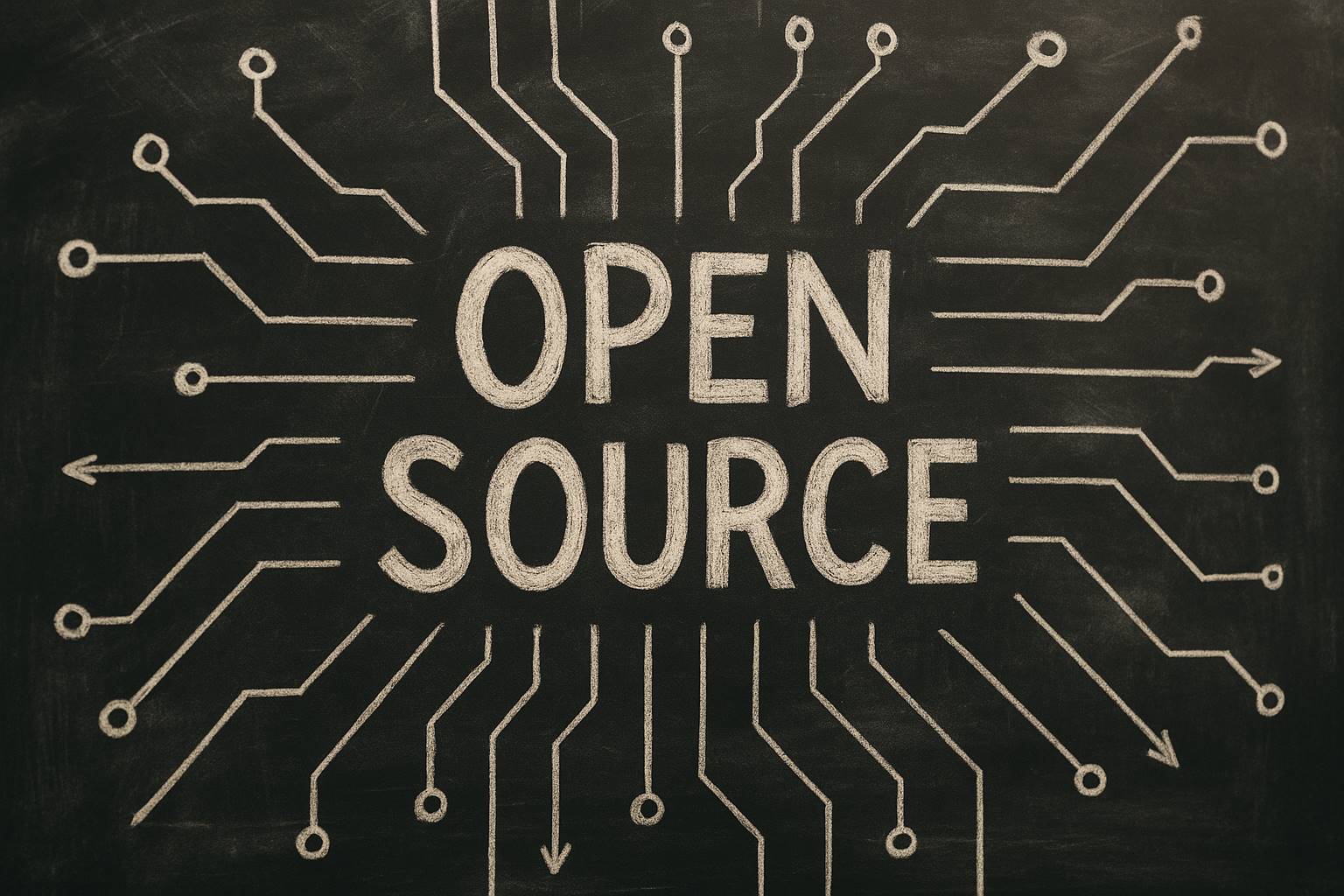
In a system without central review and absolute trust intermediaries, any code that is not open source means that no one can truly verify its security and credibility — in other words, no one dares to use it.
Decentralization forces code to be open source, and once it is open source, it effectively builds a huge "innovation diving board" in front of developers worldwide. This is not just about lowering barriers; it directly reconstructs the "productive forces of innovation."
Decentralization makes open source a necessity, and open source allows innovation to enter a flywheel. This path has never been clearer, nor has it ever been so close to every ordinary person.
3.1 How Does This Mechanism Operate?
What does traditional entrepreneurship look like? You have a good idea, and first, you need to gather a team, secure investment, set up the backend, manage servers, handle payments, register a company, buy trademarks, and run marketing. Months go by, and just the "preparatory work" consumes most of your energy.
The Web3 world, however, is completely different.

In this era of "Onchain-as-a-Service," all infrastructure has been packaged by developers into reusable "open-source building blocks": wallet login, on-chain payments, NFT issuance, community governance, voting mechanisms, content distribution…
All you need to do is pull it down from GitHub, change a few lines of configuration, and you can complete the deployment. Especially with the maturity of modular blockchains (like Celestia) and Layer 2 solutions (like Arbitrum Orbit, OP Stack), developers can more easily customize and launch their application chains.
Many times, the speed at which you build a new product is as quick as changing a phone case.
This is not just a change in technical structure; it is a revolution in the paradigm of innovation.
Farcaster is a decentralized social protocol; it is not a single app but a "social base" upon which anyone can freely build applications.

As of early 2025, the Farcaster ecosystem experienced explosive growth on the Layer 2 network Base, incubated by Coinbase. With its innovative "Frames" feature (which allows interactive applications to be embedded in the information stream), Farcaster's daily active users once exceeded 50,000, and the number of applications within the ecosystem (mini-programs or independent clients in Casts) surged to thousands. Many popular Frames applications could attract tens of thousands of user interactions within days, fully demonstrating the innovative speed brought by the combination of open-source protocols and high-performance underlying chains.
3.2 The Cliff-like Drop in Innovation Barriers
For individual developers, the open-source innovation mechanism means:
Significantly reduced costs: Basic modules are fully open source, and deployment relies on the chain, so entrepreneurship no longer requires a large number of servers, operations, and centralized payments.
Increased speed: An idea can go from concept to launch in "a few hours" instead of "a few months."
Clear return mechanisms: Developers do not rely on "waiting for acquisition" but earn through protocol-distributed tokens, community incentives, and even on-chain dividends.
According to a significant analysis by the crypto investment firm Variant Fund (whose views have been continuously validated in 2024-2025): the average startup cost for Web3 developers has decreased by over 90%, while the code reuse rate has increased by nearly 80%. This means:
Ideas are the core asset, while capital and connections are being marginalized.

3.3 Potential Risks: Speed Does Not Equal No Risk
Of course, the greater the advantages of the open-source flywheel, the higher the potential risks it brings:
Long chain dependencies: The open-source modules you use may depend on another module, and if one of those components is attacked or goes down, the entire product chain may be affected.
Legal gray areas: Not all open-source code is "free to use." Different open-source licenses (like MIT, GPL, Apache) impose different constraints on commercial use, and unauthorized use may face infringement risks.
Security issues: Code reuse also means vulnerability reuse. Once unaudited contracts go live, they can become cash machines for hackers. (In 2024, several incidents of large funds being stolen due to reentrancy attacks or oracle manipulation occurred, ringing alarm bells once again.)

Therefore, even as we enter the "flywheel era," basic auditing, testing, and legal compliance remain indispensable.
As we write this, it is not difficult to see:
In Web2, you needed to build an organization to innovate; in Web3, you only need an idea and then hand it over to the community to realize it.
Decentralization gives "ideas" intrinsic monetary value and allows all imaginative concepts to have the potential for rapid realization.
This also directly connects to the previous two flywheels: the new applications you create will bring new assets, new users, and new value, thereby generating new tokens, initiating new airdrops, and attracting new contributors… Ultimately, you also become part of the flywheel.
This is the new paradigm of innovation in Web3.
4. The Logical Closed Loop of Decentralized Business Models?
You may have already sensed that tokenization, the airdrop economy, and the open-source innovation flywheel are not three unrelated trends; there exists a very strong logical closed loop among them.
This is not some coincidence but a brand new way of organizing the economy.
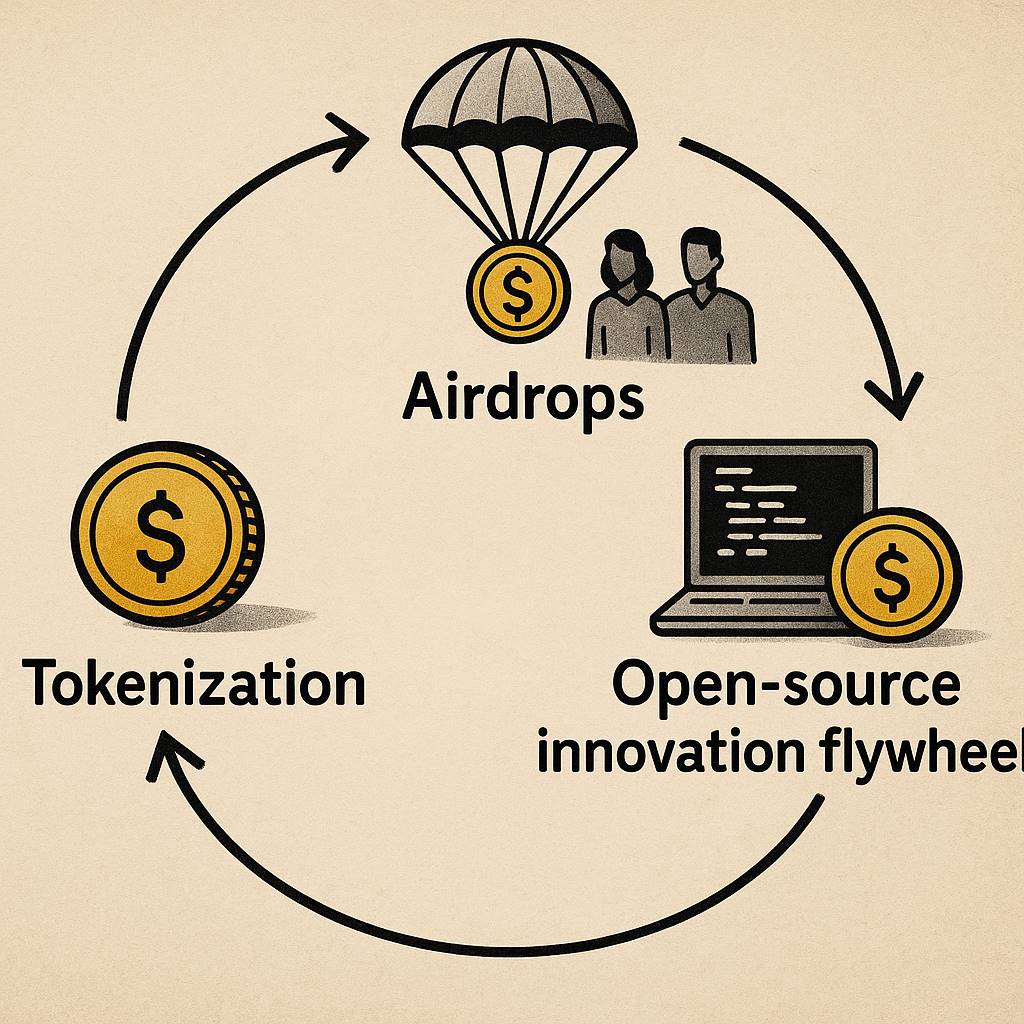
4.1 How Positive Feedback is Formed
The original essence of the internet is the free flow of information. The essence of Web3 is to allow value to flow like information.
Step one: Tokenization allows everything to be "priced" and flow freely.
Tokenization gives value a specific "format" and "address" on-chain, allowing any asset to be split, transmitted, and combined, from physical to abstract, from local to global; everything can be put on-chain.
You can use USDC for cross-border payments, use stETH for lending, invest in tokenized U.S. Treasury bonds with BlackRock's BUIDL, and even tokenize "non-mainstream assets" like attention, storage space, bandwidth, and the security of restaking (like EigenLayer's AVS) to realize actual returns.
Everything starts with "on-chain pricing."
Step two: The airdrop economy directly distributes value to ordinary people.
With tokens, the issue of "value attribution" naturally arises.
In traditional internet models, users create value while platforms capture it. You work hard to watch videos, like, comment, and get people to register, but in the end, it is the platform and capital that make the big money.
The airdrop mechanism in Web3 completely changes the distribution path of value: instead of spending on advertising to buy traffic, it directly "gives money" to users in exchange for loyalty.
Projects like EigenLayer, Starknet, and Wormhole have proven one thing: if you want to attract new users, the most effective way is not to "tell stories" but to "distribute money."
Thus, a new entrepreneurial logic is born:
First, build an on-chain application at low cost using open-source modules, then use token airdrops to attract early users and contributors. As popularity rises, TVL increases, token value appreciates, creating market attention and traffic siphoning.
Airdrops are not just benefits; they are the ignition switch for starting this flywheel.
Step three: The open-source innovation flywheel continuously births new products.
With tokens as "fuel" and users and funds as the "engine," the rest is to initiate rounds of innovation.
The open-source innovation flywheel precisely addresses the most painful point for Web2 entrepreneurs: high resource barriers and slow speed.
Now you don’t need to develop a wallet system, deploy backend servers, or handle payment settlements.
Everything is modularized, just waiting for you to "piece it together."
The reduction in innovation barriers + the openness of the token incentive mechanism has led countless developers worldwide to start "entrepreneurship through code," allowing even one person to start a company and even one idea to become an application.
Thus, on-chain innovation has experienced an unprecedented explosion.
For example:
On Farcaster, a Frames application can attract tens of thousands of user interactions within just a few days;
Applications built on modular blockchains (like Celestia Tia) or OP Stack see new projects announced or launched on average every week;
The restaking ecosystem (such as the AVS project on EigenLayer) has seen a core protocol drive the emergence of dozens of projects, continuously distributing incentives through points and airdrop expectations.
These "projects" will ultimately form new assets, accumulate new value, and further tokenize, initiating a new cycle of growth.

4.2 The Ecological Flywheel is Spinning Rapidly
When we connect these three elements, an astonishing picture emerges:
Tokenization: All value now has a digital expression and can flow freely on-chain;
Airdrop economy: Users, creators, and developers obtain value attribution through incentive mechanisms;
Open-source innovation flywheel: New projects continuously emerge, driving the birth of new scenarios, new assets, and new applications…
Then, these new applications will generate new tokenizable value, which in turn triggers a new round of airdrops, attracting more people to join and forming the next wave of innovation.
This structure is not linear growth but exponential explosion. It is not "the rise of a product" but "the self-replication of an ecosystem."
It is like an ever-accelerating spiral—
One protocol can give birth to a token;
One token can stimulate an ecosystem;
One ecosystem can create a new economic order.
Therefore, the true value of decentralization is not just "data on-chain" or "breaking intermediaries," but for the first time:
Making the creation, distribution, and transmission of value incredibly efficient;
Allowing countless individuals to collaborate without relying on systems or organizations, solely based on consensus and incentive mechanisms;
Enabling innovation to self-replicate and evolve at an astonishing speed, resulting in "societal-level productivity release."
This is not a technological revolution; it is a completely new institutional revolution.
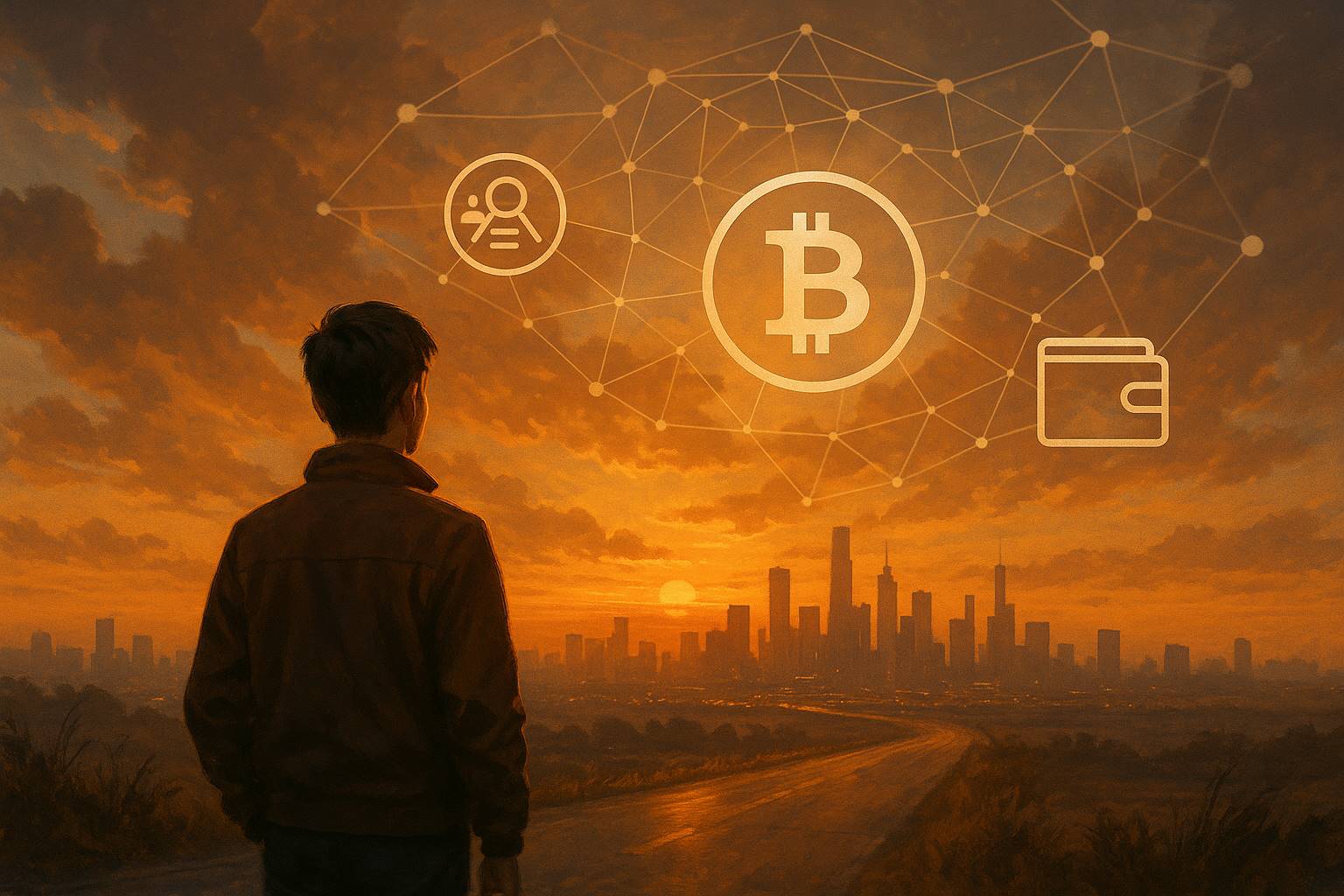
Conclusion: The Future Has Arrived
As we look back on these three articles, a clear thread gradually emerges:
In the first article, we exposed the veil of "false decentralization," revealing that no matter how many chains or how flashy the code, if we still entrust our lifeline to centralized cloud services and traditional platforms, the so-called "freedom" is merely a layer of wrapping paper, an illusion.
In the second article, we dismantled the underlying logic of true "decentralization": distributed ledgers, incentive mechanisms, and governance systems, which together construct a new order that is more stable, trustworthy, and resistant to censorship.
And today, we finally answer the most fundamental question:
"What does this have to do with you?"
The answer is: it has a lot to do with you.
Decentralization is not some distant technological ideal; it is a power restructuring happening right around you and me. It will directly affect:
Whether you can participate in the appreciation dividends of global assets with a smaller capital;
Whether you can bypass intermediaries and become a shareholder of the platform instead of a "tool user";
Whether you can take an idea, piece together a few modules, and have it run globally without needing financing, networking, or waiting for approvals.
In the Web2 era, we were "users" — collected data, extracted attention, and passively accepted terms.
In the Web3 era, we can finally become "co-builders," "partners," and "governors" — true stakeholders.
For the first time in history, ordinary people have the ability to participate in "institutional design" at an extremely low threshold.
Not through ballot boxes, not through petitions, but through "wallets + signatures," by holding a certain token, participating in a certain DAO, or simply being an early user of a certain protocol, one can become a co-builder of a new round of institutions and order.
Ultimately, the revolution of decentralization is not just a change in technical architecture but a change in how value is generated, how it is distributed, and who decides it.
Although the passage of the U.S. stablecoin bill has introduced new variables into decentralization, the true meaning of decentralization lies in:
For the first time, the power, interests, and future that were once only in the hands of large companies and big capital have fallen into the hands of ordinary people.
This is a reconstruction of production relations.
This is a descent of grassroots power.
This is a complete paradigm shift that overturns the "platform - user" relationship.
And we are precisely in the front row of this transformation.
You don’t need to become a programmer, nor do you need to be a miner. You just need to realize:
This era is already different.
The next round of era dividends is not in the hands of those who have already occupied the territory of "platforms," but in the hands of those who are willing to participate, willing to learn, and willing to exchange actions for equity.
Who does the future belong to? It does not belong to the giants, nor to those who knew early, but to those who dare to "act after knowing early."
The trilogy of decentralization ends here.
But your own journey of decentralization may just be beginning.
Where should you start?
If you are a newcomer, you might start with the beginner's tutorial collection I have organized to quickly master the necessary skills, while participating in a few zero-cost airdrop projects to establish your initial assets and cognitive accumulation at minimal cost.
If you are already a veteran in Web3, welcome to join the Alpha Planet we are building, where a group of frontline explorers will gather, and together we will discover the true decentralization dividends and seek the next explosive potential Alpha project.
This time, do not be a bystander.
Are you ready?
免责声明:本文章仅代表作者个人观点,不代表本平台的立场和观点。本文章仅供信息分享,不构成对任何人的任何投资建议。用户与作者之间的任何争议,与本平台无关。如网页中刊载的文章或图片涉及侵权,请提供相关的权利证明和身份证明发送邮件到support@aicoin.com,本平台相关工作人员将会进行核查。




